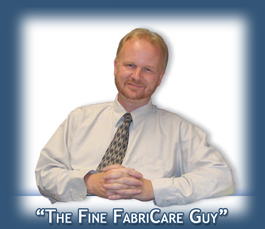Q - When I clean cotton upholstery, I use fine fabric shampoo, sometimes boosted with Boost All (buffered with Buff All)and sometimes Citrus Solv. I mix it in a bucket, work up a foam, apply it with a brush, spray it lightly with Fab Set and vaccuum it off. This works well but is time consuming, also sometimes the brush gets too wet and I get part of the fabric wetter than I wanted. I wondered how Avenge neutral prespray would work as compared to what I'm doing?
A - This low moisture, also known as dry foam, cleaning technique has stood the test of time as a very safe and effective method for cleaning fabrics that might otherwise be susceptible to cellulose browning or color bleeding.
When you boost with Boost All and Buff All, you not only prevent browning, but you also will often remove preexisting browning or tannin stains. I would caution you that this mix might overwhiten natural cotton fabrics, and that you might want to consider boosting the Fine Fabric Shampoo with Coffee Stain Remover, which will prevent/cure browning without overwhitening. The Citrus Solv is very useful for oily soils, but you should note that it does tend to eliminate you foam, and might be responsible for the "wet spots" you are noticing.
To get more even results when you do use low moisture cleaning, squeeze your shampoo solution (with whatever additives you feel are necessary) through a natural sponge or a hydra sponge and create a thick foam on top of the solution.
THEN dip your horsehair brush into the foam only. This will prevent your "wet spots".
The Avenge Neutral Prespray is a very effective prespray that works well on natural fibers. However, I have found that it is more likely to cause color bleeding (even with its neutral pH) than will Fine Fabric Shampoo.
Do you own a "dry tool"? You can use Avenge Neutral Prespray more safely with a Hydrokinetic, Drimaster, or Hy Dry Tool than you can if you are using a "wet tool".
With "dry tools", you'll save time and get the fabrics cleaner than ever. But even with those tools, there are still many times that the original formula you outlined is the best choice for restoring heavily soiled sensitive fabrics.
Just remember, sponge first, then brush.
Friday, June 12, 2009
FAQs - Upholstery Cleaning
Posted by Jim Pemberton at 2:49 PM 0 comments
Labels: FAQs, Upholstery Cleaning
Subscribe to:
Comments (Atom)
